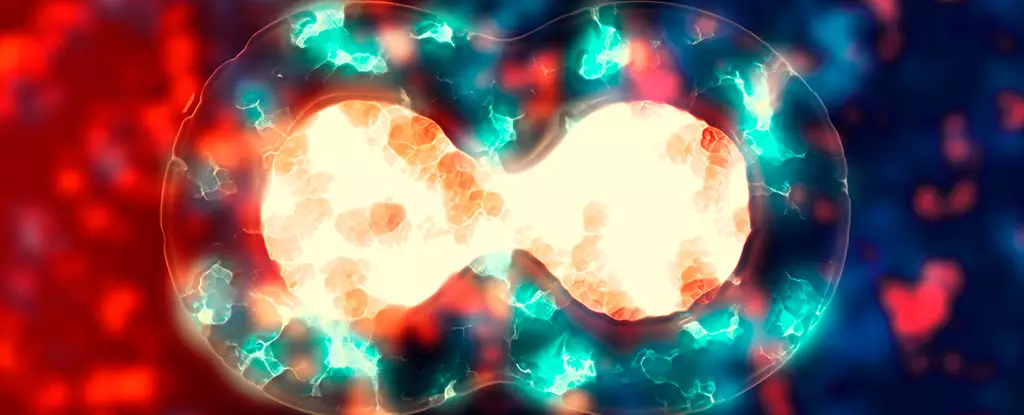Schizophrenia, a debilitating neurological disorder, has long remained a mystery, nestled deep within the intricate interplay of genetic and environmental factors. While the roots of this disorder have been thought to primarily lie in inherited genes, recent research suggests that its origins may be unearthed in the early stages of gestation. A team of researchers led by Harvard Medical School clinician-scientist Eduardo Maury delved into a vast treasure trove of genetic data, analyzing blood samples from nearly 25,000 individuals with and without schizophrenia. Their investigations unveiled two genetic deletions, NRXN1 and ABCB11, shedding light on the cryptic beginnings of this perplexing disorder.
Seeds of Schizophrenia: Acquired Discoveries
Traditionally, schizophrenia has been associated with inherited genetic mutations, where the affliction is passed down from parent to child. However, the study led by Maury challenges this conventional belief. The research team discovered that the mutations in NRXN1 and ABCB11 are not inherited from parents but are instead acquired during early prenatal development. These somatic mutations occur after embryonic cells have embarked on their unique journeys to form distinct cell types. Consequently, these mutations are not present in all cells of the body but rather reside in specific tissues such as the brain and blood cells. This groundbreaking revelation suggests that schizophrenia can emerge without a clear basis in inheritance, opening doors to a deeper comprehension of this enigmatic disorder.
The study uncovered partial deletions of NRXN1 in five cases of schizophrenia, a significantly higher prevalence compared to population-level databases. NRXN1 plays a crucial role in facilitating signal transmission between brain cells and has previously been linked to schizophrenia when mutations are inherited. However, this study revealed the presence of somatic mutations in NRXN1, implying that disruptions in this gene occurring during early development or later stages of life contribute to the development of schizophrenia. These somatic mutations are passed down to subsequent cells descended from the mutated cell, providing insight into the complex intergenerational transmission of this disorder.
ABCB11, on the other hand, encodes a liver protein and has a less certain link to schizophrenia. Nevertheless, the research team found deletions within the ABCB11 gene in five cases of schizophrenia. Interestingly, all individuals who exhibited these deletions showed no response to antipsychotic medications, adding another layer of complexity to the disorder. While the association between ABCB11 and schizophrenia is not yet well-established, this finding prompts further investigations into the potential role of this gene in treatment-resistant schizophrenia.
Peering into the Genetic Architecture of Schizophrenia
As the research investigates NRXN1 and ABCB11 in the context of schizophrenia, it becomes evident that these genetic alterations play a small but notable role in the disorder’s genetic architecture. However, additional studies are needed to unravel the true extent of their contributions. The discovery of acquired somatic mutations allows for a more comprehensive understanding of the complex web of factors that underlie schizophrenia. By recognizing that not all cases are directly linked to inheritance, researchers can potentially develop early prevention strategies that focus on mitigating gestational complications, childhood trauma, or viral infections that may increase the risk of schizophrenia.
Forging New Avenues in Schizophrenia Research
The revelation of NRXN1 and ABCB11 as contributors to the genetic architecture of schizophrenia opens up new pathways for exploration. Researchers can now delve deeper into the unraveling of early gestation, seeking to understand the mechanisms that give rise to these somatic mutations and their impact on fetal brain development. By comprehending the critical junctures where disruptions occur, scientists may pave the way for interventions that prevent the onset or mitigate the severity of schizophrenia. This newfound knowledge also emphasizes the importance of multidisciplinary research collaborations, as genetic studies intertwine with fields such as neurobiology and epidemiology to provide holistic insights into the disorder.
The study led by Eduardo Maury and his team unravels the enigma of early gestation, shedding light on the intricate genetic origins of schizophrenia. By identifying NRXN1 and ABCB11 as genes associated with the disorder when acquired during fetal development, the research opens doors to early prevention strategies and a broader understanding of the disorder’s complexity. As the scientific community embarks on further investigations into the interplay between genetics and environmental factors, we pave the way for a future where the seeds of schizophrenia are sown with knowledge, compassion, and transforming lives along the way.


Leave a Reply